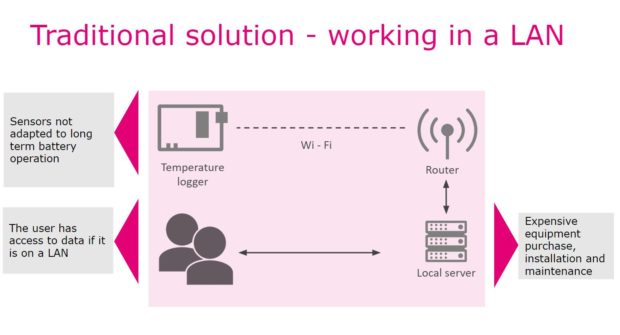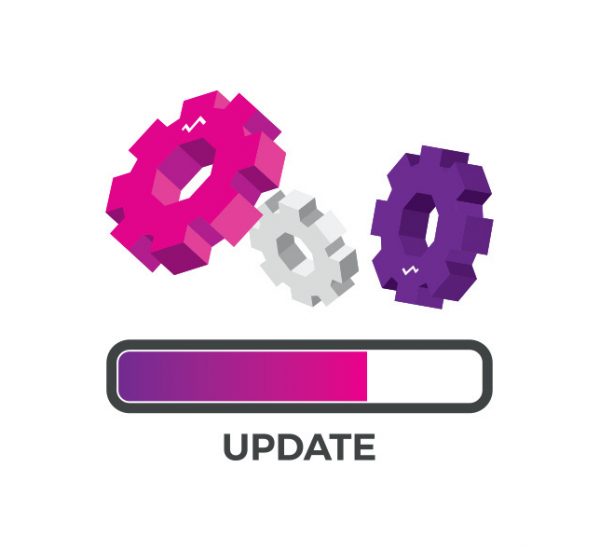Legal requirements and growing payroll costs related to technical supervision of installations cause a strong increase in automatic systems for monitoring temperature, humidity, pressure, presence of gases and dust.
Below we’ve collected answers to the most frequently asked questions from investors about choosing the right monitoring solution.
What type of monitoring installation should you choose: cable based or wireless?
The wireless solution is supported by:
- significantly lower installation costs,
- ease of service,
- greater reliability associated with fewer mechanical connections and active devices.
Currently, wireless sensors work on batteries for about 5 years, so power supply is not a problem.
There are many wireless monitoring systems available on the market. What to consider when choosing?
First of all, it should be noted whether the transmission method is based on the standards provided for wireless sensors. Wireless sensors should use transmission protocols dedicated to sensor solutions: Bluetooth LE, Zigbee, Sigfox, LoRa, NB-IoT, LTE Cat M. The use of these techniques is a condition for building a future proof installation. Currently, many solutions use wireless communication standards not adapted to the sensor networks (e.g. WiFi).
Very often the investor’s requirement is to save data on local servers, are there any advantages of such a solution?
Disadvantages are easy to mention, advantages are hard to find. The most important problems associated with choosing such a solution are:
- high installation price associated with the purchase of servers
- costly operation related to the supervision of servers and software
- danger of failure and data loss
- a problem with the organization of supervision by people outside the facility

So what are the advantages of using a cloud platform?
First of all, they don’t have the disadvantages listed above. In addition, the costs of implementing and operating such systems are much lower. We have met the installation cost estimates several times in the form of local data storage, which were up to 10 times higher than “cloud monitoring”. Cloud-based installations work with virtually no maintenance, while systems based on local servers require full-time care for installations with more than 100 sensors.

Cloud-based systems have become increasingly popular over the past few years. Is there anything else that inhibits their growth?
In recent years, we have observed a very large increase in interest in the cloud-based system, which translates into a several-fold increase in implementations. Unfortunately, in many cases investors decide to costly expand the existing system instead of implementing a completely new solution. We met with a tender for the modernization of a large, old installation based on local servers, settled for $100 000, while the set up of a new, more reliable cloud based installation would cost around $40 000 and would last much shorter than modernization. The issue is that many investors simply copy old RFPs – since we have previously bought such a system, it is easier to use previously prepared documents, especially since the lack of specialists in supply departments does not allow insight into modern techniques.
Another reason is the “institutional” fear of the cloud. While we keep records of our savings in the bank, e-mail or photos on the cloud, we build unreliable local systems to store temperature data. However, we observe that this is changing rapidly and institutions are trusting the cloud platforms more and more.
What can you recommend from your offer?
We can recommend a solution based on Bluetooth Low Energy. It consists of wireless sensors, gateway and Efento Cloud platform. Data from sensors is transferred to the gateway, and from it directly to the platform in the “cloud” consisting of several servers, for security located throughout Europe. In the “cloud” there is software for displaying current parameters on any computer, generating automatic reports and notifications via emails and SMS. A dedicated mobile application allows you to use all the functions of the “cloud” from anywhere in the world using smartphones. This mode is used in Poland by several hundred clients including, among others, Children’s Hospital in Krakow, Children’s Health Center, Pilkington, Jagiellonian University, Military Clinical Hospital in Wrocław, and Zabka stores. What distinguishes us from competitive solutions is a one-time fee for using the platform. The user does not pay any cyclical (subscription) fees for using the platform. A one-time payment when implementing the system enables unlimited use of the cloud.
CAN I TEST THE SYSTEM BEFORE PURCHASE?
Yes, you can borrow Efento temperature sensors and gateway for free for 30 days. Installation and configuration is done on its own and takes from 30 min to 1.5 hours. The entire installation and configuration is discussed in the instructional video.

